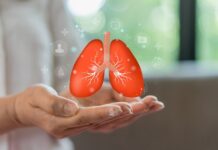A recent analysis compared costs associated with an oral therapy appliance (O2Vent Optima) versus those associated with continuous positive airway pressure (CPAP) therapy in patients with obstructive sleep apnea (OSA). The authors reported that the oral therapy appliance resulted in significant net savings over three and five years. They presented their findings at the CHEST Annual Meeting in Boston, Massachusetts.
The authors explained that both approaches effectively lower apnea-hypopnea index (AHI) scores and improve function among patients with OSA.
“However, cost concerns remain a significant barrier to mandibular advancement device adoption (MAD) for many patients and clinicians. The pricing is not transparent, as total costs of OSA treatment with both CPAP and MAD can vary based on the exact devices used and by payor, provider, and region. Out-of-pocket costs also vary wildly based on the exact details of patients’ insurance benefits, which makes it difficult to perform an informative cost comparison,” authors explained the authors, led by Satyendra Sharma.
In Canada, where the authors practice and the study was conducted, the government offsets some of the costs of CPAP therapy. The consumer or the consumer’s private insurance is generally responsible for the consumable items, such as the mask, hose, tubing, filters, mask wipes, mask replacement cushions, water reservoir, and distilled water. The O2Vent Optima is a custom oral appliance designed to treat OSA. It also requires several consumable items: connector bands, antibacterial tablets, and valves.
The cost analysis found that the initial cost of CPAP is $1,500, or $1,385 after the government subsidy. Each year, the consumables cost $1,330. Therefore, the total cost is $5,375 for three years and $8,035 for five years. In comparison, the O2Vent Optima costs $2,500 if insurance is used or $2,000 if the patient pays out of pocket. The consumables cost $200 per year. Therefore, the total cost is $3,100 (or $2,600) for three years and $3,500 (or $3,000) for five years. This equates to a net savings of $2,275 over three years and $4,535 over five years for patients managed with O2Vent Optima.
“There is a common perception that oral appliance therapy is more expensive than CPAP therapy. This may be a prohibitive factor for many clinicians and patients to choose a less intrusive therapy with better compliance,” the authors wrote. However, they anticipate that their results may encourage Canadian insurance companies to compensate for the oral appliance more often.
Reference
Sharma S, Al Metwali R. Cost of therapy with novel expiratory positive airway pressure (EPAP) enhanced mandibular advancement device (EMAD) vs continuous positive airway pressure (CPAP) in Canada. Presented at the CHEST Annual Meeting; October 6-9, 2024; Boston, Massachusetts.





